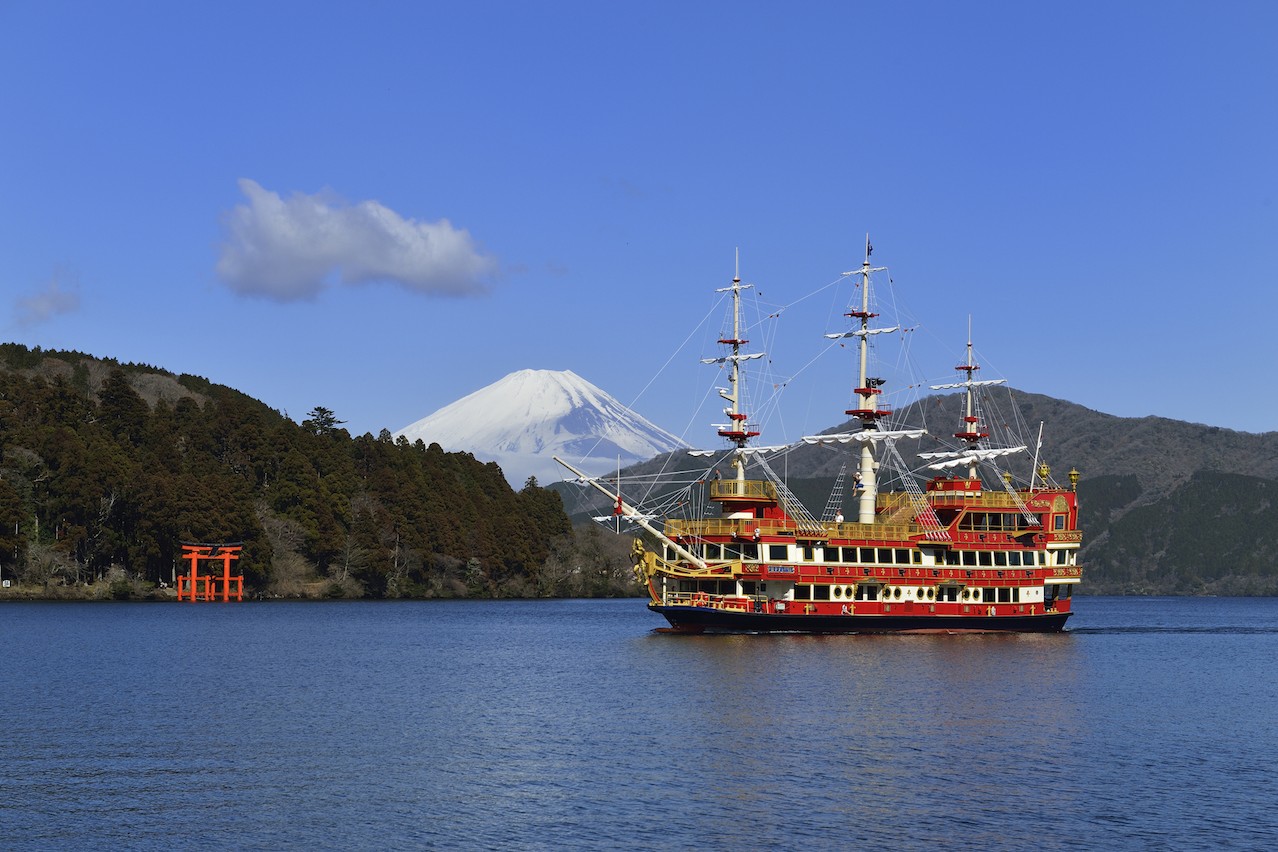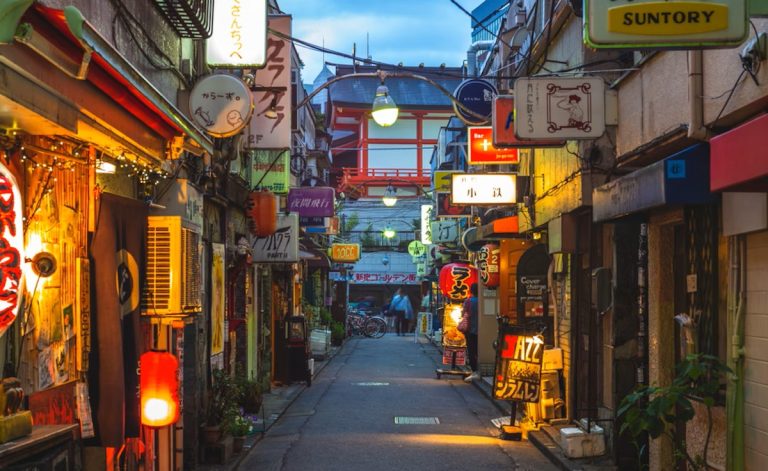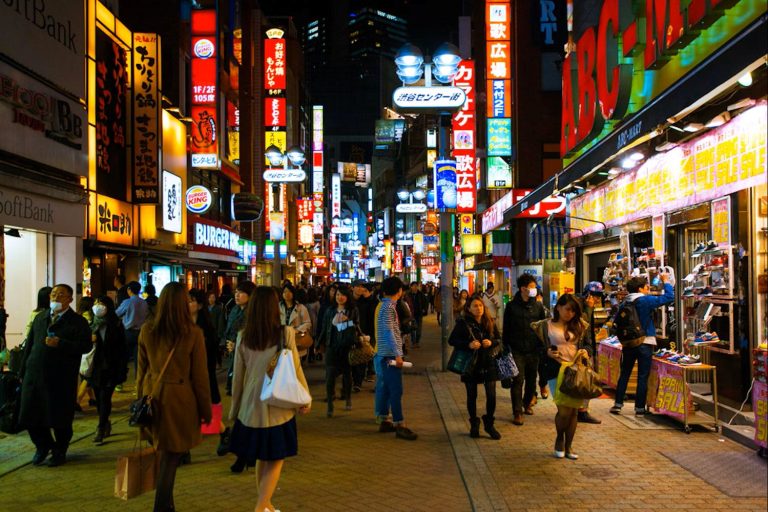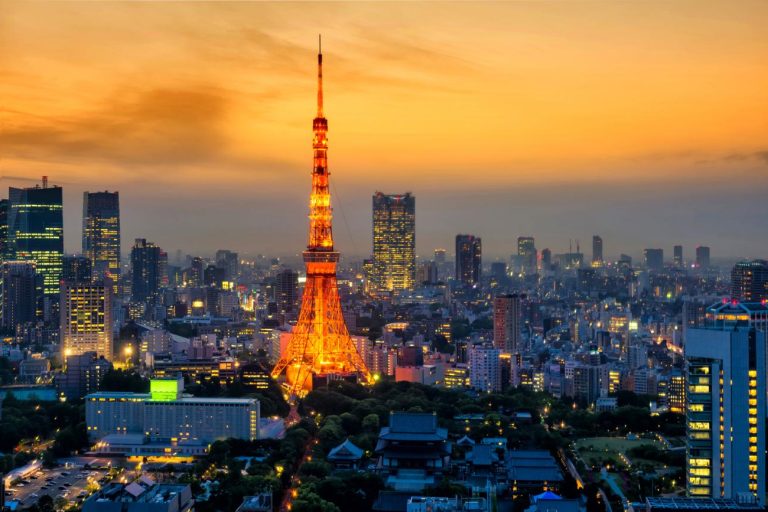Getting Started with Shinjuku to Hakone Travel
Traveling between Tokyo’s bustling Shinjuku district and the serene hot spring town of Hakone-Yumoto has never been more convenient. This popular route connects Japan’s largest metropolitan area with one of the country’s most beloved resort destinations, offering travelers a perfect escape from city life. The journey takes you through scenic landscapes, past Mount Fuji views, and into a world of traditional Japanese hospitality.
The route has become increasingly popular among both domestic and international visitors, thanks to improved transportation options and digital ticketing systems. Whether you’re planning a day trip or an extended stay, understanding your travel options will help you make the most of your adventure. The connection between these two destinations represents more than just transportation – it’s a bridge between modern urban Japan and its traditional cultural heritage.
Many travelers combine this journey with other popular routes, creating comprehensive itineraries that showcase different aspects of the Tokyo region. The convenience of modern transportation makes it possible to experience multiple destinations in a single trip, maximizing your time in Japan.
Transportation Options
Overview of the Limited Express Romancecar
The Limited Express Romancecar stands as the premier transportation choice for travelers heading from Shinjuku to Hakone-Yumoto. This iconic train service, operated by Odakyu Railway, offers comfort, speed, and spectacular views throughout the journey. The Romancecar features spacious seating, large windows perfect for sightseeing, and a smooth ride that makes the travel experience as enjoyable as the destination itself.
The train’s distinctive design and premium amenities set it apart from regular express services. Passengers can enjoy comfortable seats with ample legroom, onboard refreshment services, and panoramic windows that showcase the changing landscape as you travel from urban Tokyo into the mountainous Hakone region.
Digital Ticketing and e-Romancecar
Modern technology has revolutionized how travelers book and manage their Romancecar journeys. The e-Romancecar platform allows passengers to purchase tickets, select seats, and manage reservations entirely through their smartphones. This digital approach eliminates the need for physical tickets and reduces the risk of losing important travel documents.
The system offers real-time availability updates, making it easier to secure seats during peak travel periods. Users can store their digital tickets directly on their phones, streamlining the boarding process and making travel more efficient.
Discount Passes Available
Several discount passes can significantly reduce your travel costs while providing additional benefits. The Digital Hakone Free Pass offers unlimited rides on local transportation within the Hakone area, plus discounts at various attractions and restaurants. This pass represents excellent value for travelers planning to spend a full day exploring the region.
Other options include the Hakone Kamakura Pass for those wanting to visit multiple destinations, and the Greater Tokyo Pass for more extensive regional travel. Each pass offers different benefits and coverage areas, allowing you to choose the option that best matches your itinerary.
Routes and Timetables
Romancecar services operate on regular schedules throughout the day, with increased frequency during peak travel times and seasons. The journey from Shinjuku to Hakone-Yumoto typically takes about 85 minutes on the fastest services, making it an ideal option for day trips. Morning departures are particularly popular, allowing travelers to maximize their time in Hakone.
Timetables are designed to accommodate both leisure travelers and commuters, with services running from early morning until evening. Weekend and holiday schedules may differ slightly, so checking current timetables before your journey is recommended.
Seat Reservations and Surcharges
Romancecar travel requires seat reservations and includes a limited express surcharge in addition to the basic fare. This system ensures all passengers have guaranteed seating and contributes to the premium travel experience. Reservations can be made up to one month in advance, which is particularly useful during busy periods like cherry blossom season or autumn foliage viewing times.
The surcharge varies depending on the specific Romancecar service and seating type selected. Premium seats with extra amenities are available on some services for travelers seeking an even more luxurious experience.
Traveling from Shinjuku to Hakone
Using the Odakyu Romancecar
Boarding the Romancecar at Shinjuku Station is straightforward, with clear signage directing passengers to the appropriate platforms. The station staff are helpful and many speak basic English, making navigation easier for international visitors. Arriving at the station 15-20 minutes before departure allows time to find your platform and settle in comfortably.
The journey itself offers stunning views, particularly as you leave the urban areas and enter the more mountainous regions approaching Hakone. On clear days, Mount Fuji becomes visible, creating perfect photo opportunities through the train’s large windows.
Purchasing the Digital Hakone Free Pass
The Digital Hakone Free Pass can be purchased online or at the station, offering significant convenience and savings for travelers planning to use multiple forms of transportation in Hakone. This pass covers buses, trains, cable cars, and boats within the Hakone area, making it an excellent value for comprehensive sightseeing.
The digital format means you can purchase and activate the pass using your smartphone, eliminating the need to carry physical tickets. The pass also includes discounts at numerous attractions, restaurants, and shops throughout the Hakone region.
Traveling Tips for Shinjuku to Hakone
Timing your departure can significantly impact your travel experience. Early morning trains are less crowded and offer better chances of clear mountain views, including glimpses of Mount Fuji. Weekdays generally provide a more relaxed travel atmosphere compared to busy weekends and holidays.
Packing light refreshments for the journey enhances comfort, though onboard services are available on most Romancecar trains. Bringing a camera or ensuring your phone has sufficient battery life is essential for capturing the scenic views along the route.
Recommended Itineraries
A well-planned day trip from Shinjuku can include multiple Hakone attractions while allowing comfortable travel time. Starting with an early morning departure gives you maximum time to explore hot springs, museums, and scenic viewpoints before returning to Tokyo in the evening.
For travelers with more time, combining Hakone with nearby destinations creates memorable multi-day adventures. The transportation network makes it easy to extend your journey to other scenic areas in the region, similar to how other routes like Tokyo Station to Kawaguchiko bus service connect different mountain destinations.
Shopping in Shinjuku
Getting Glasses at JINS Lumine Shinjuku
Before departing for Hakone, many travelers take advantage of Shinjuku’s excellent shopping opportunities, particularly for practical items like eyewear. JINS Lumine Shinjuku offers an impressive service where custom glasses can be made in as little as 30 minutes, making it perfect for travelers with limited time. The store’s location in the Lumine shopping complex provides easy access and a wide selection of frames and lens options.
The quick turnaround time means you can order glasses, explore nearby shops or grab a meal, and return to collect your new eyewear before catching your train to Hakone. This efficiency makes JINS particularly popular among tourists who want to combine practical shopping with their travel plans.
Frame and Lens Options
JINS offers an extensive range of frame styles to suit different preferences and face shapes. Their collection includes trendy designs for fashion-conscious customers, functional options for active lifestyles, and fun choices like colored lenses for those wanting to make a statement. The variety ensures that every customer can find something that matches their personal style and practical needs.
Lens options include various coatings and treatments, from basic prescription lenses to advanced options with blue light filtering or UV protection. The staff can explain the benefits of different lens types and help you choose the best options for your lifestyle and budget.
JINS BRAIN AI System for Recommendations
The innovative JINS BRAIN AI system analyzes your facial features and personal preferences to recommend frames that will look best on you. This technology takes the guesswork out of frame selection, using advanced algorithms to suggest styles that complement your face shape, skin tone, and personal style preferences.
The system considers factors like frame size, color, and style to provide personalized recommendations. This AI-assisted approach helps customers make more confident choices and often introduces them to frame styles they might not have considered otherwise.
Attractions in Hakone
Visiting the Venetian Glass Museum
The Hakone Glass Forest Museum, also known as the Venetian Glass Museum, stands as one of the region’s most elegant attractions. This unique museum showcases an impressive collection of Venetian glass art, set within beautiful gardens that change with the seasons. The combination of artistic masterpieces and natural beauty creates a memorable experience that appeals to visitors of all ages.
The museum’s outdoor installations are particularly striking, with glass sculptures that catch and reflect sunlight throughout the day. The indoor galleries feature historical pieces and contemporary works, providing insight into the evolution of Venetian glassmaking techniques.
Scenic Views of Mt. Fuji
Hakone offers some of Japan’s most spectacular views of Mount Fuji, particularly from elevated viewpoints accessible by cable car and ropeway. Lake Ashi provides another excellent vantage point, where the mountain’s reflection creates picture-perfect scenes on calm days. The best viewing conditions typically occur in the early morning or late afternoon when atmospheric conditions are most favorable.
Seasonal variations affect visibility, with autumn and winter generally offering clearer views than summer months. Even when Mount Fuji isn’t fully visible, the surrounding landscape provides stunning scenery that makes the journey worthwhile.
Hot Springs and Wellness Activities
Hakone’s hot springs, or onsen, represent the heart of the region’s appeal. These natural thermal baths offer relaxation and therapeutic benefits, with many facilities providing both indoor and outdoor bathing options. The mineral-rich waters are believed to have healing properties, making them popular among both locals and visitors seeking wellness experiences.
Various types of hot spring facilities cater to different preferences, from traditional public baths to luxury resort spas. Many locations offer day-use options, making them accessible for travelers on shorter visits.
Dining Options in Hakone
Local Cuisine to Try
Hakone’s culinary scene reflects both its mountain location and tourist destination status. Local specialties include mountain vegetables, fresh river fish, and regional variations of traditional Japanese dishes. Many restaurants incorporate ingredients sourced from the surrounding mountains and lakes, creating meals that reflect the natural environment.
Traditional kaiseki dining experiences are available at many ryokan and upscale restaurants, offering multi-course meals that showcase seasonal ingredients and artistic presentation. These meals provide insight into Japanese culinary traditions and the importance of seasonal eating.
Restaurants with Scenic Views
Many Hakone restaurants capitalize on the region’s natural beauty by offering dining spaces with panoramic views. Lake Ashi restaurants provide waterfront dining experiences, while mountain-side establishments offer elevated perspectives of the surrounding landscape. These venues combine excellent food with memorable settings, creating dining experiences that enhance your overall visit.
Reservations are often recommended, especially for restaurants with the best views or during peak visiting seasons. Many establishments offer both indoor and outdoor seating options, allowing diners to choose based on weather conditions and personal preferences.
Quick Bites Near Attractions
For travelers with packed itineraries, numerous casual dining options provide quick, satisfying meals near major attractions. These range from traditional Japanese fast food to international options, ensuring that dietary preferences and time constraints can be accommodated. Many museums and tourist sites have their own cafes or restaurants, making it convenient to refuel during your explorations.
Street food and local snacks are also available in tourist areas, offering opportunities to try regional specialties without committing to full restaurant meals. These options are particularly useful for travelers moving between multiple attractions in a single day.
Accessibility and Support Services
Travel Support Centers
Odakyu Railway operates travel support centers that provide assistance with route planning, ticket purchases, and general travel information. These centers are staffed with multilingual personnel who can help international visitors navigate the transportation system and plan their journeys effectively. The centers also provide maps, brochures, and other helpful materials in multiple languages.
Support services extend beyond basic ticketing to include assistance with luggage, accessibility needs, and emergency situations. This comprehensive support system helps ensure that all travelers can enjoy their journey with confidence and peace of mind.
Baggage Services
Baggage delivery services allow travelers to send luggage directly to their accommodation in Hakone or other destinations, eliminating the need to carry heavy bags during travel. This service is particularly valuable for travelers with multiple stops or those planning to do significant shopping during their trip.
Same-day and next-day delivery options are available, with tracking services that allow you to monitor your luggage’s progress. This convenience lets you travel light while ensuring your belongings arrive safely at your destination.
Free Wi-Fi Availability
Free Wi-Fi access is available at major stations, on many Romancecar trains, and throughout the Hakone region. This connectivity allows travelers to stay in touch, access maps and travel information, and share their experiences in real-time. The widespread availability of free internet access makes it easier to navigate unfamiliar areas and stay connected with travel companions.
Many tourist facilities, restaurants, and attractions also offer complimentary Wi-Fi, ensuring that connectivity is rarely an issue during your visit. This infrastructure supports the digital ticketing systems and mobile apps that enhance the modern travel experience.
Planning Your Day Trip
Timing Your Visit
Successful day trips to Hakone depend largely on timing and efficient planning. Starting early allows maximum time for sightseeing while avoiding the crowds that build up later in the day. Morning departures also increase your chances of clear weather and better mountain views, particularly important for Mount Fuji sightings.
Seasonal considerations affect both transportation schedules and attraction operating hours. Spring and autumn are particularly popular times, requiring advance planning and reservations. Winter visits offer unique experiences but may have limited transportation options due to weather conditions.
Combining Activities for an Efficient Day
Effective day trip planning involves grouping attractions by location and transportation connections. The Hakone Loop, which includes buses, trains, cable cars, and boats, provides an efficient way to see multiple attractions while minimizing travel time between locations. Planning your route to follow this loop in one direction helps avoid backtracking and maximizes your sightseeing time.
Allowing flexibility in your schedule accommodates unexpected discoveries or longer stays at particularly appealing locations. Building in buffer time also helps manage transportation delays or weather-related changes to your plans.
Transportation Back to Shinjuku
Return journey planning should account for potential delays and allow adequate time to reach your departure station. Evening Romancecar services can be busy, particularly on weekends and holidays, so making return reservations when you purchase your outbound tickets is advisable. This approach guarantees your seat and provides peace of mind throughout your day in Hakone.
For travelers exploring multiple destinations in the Tokyo area, connections to other transportation options are available. The comprehensive network makes it easy to continue your journey to other areas, whether you’re heading to Haneda Airport via Shinjuku express bus services or planning to visit other mountain destinations accessible from Tokyo’s major stations.
Frequently Asked Questions
What is the fastest way to travel from Shinjuku to Hakone-Yumoto?
The Limited Express Romancecar is the fastest and most comfortable option, taking about 85 minutes.
How can I purchase tickets for the Romancecar?
Tickets can be purchased through the e-Romancecar platform on your smartphone or at the station.
Are there any discount passes available for travel in Hakone?
Yes, the Digital Hakone Free Pass offers unlimited rides on local transport and discounts at attractions.
What are the best times to visit Hakone for clear views of Mount Fuji?
Early morning or late afternoon during autumn and winter typically provide the best viewing conditions.
What shopping options are available in Shinjuku before heading to Hakone?
Shinjuku offers excellent shopping opportunities, including quick services for custom glasses at JINS Lumine Shinjuku.
Maximizing Your Journey from Shinjuku to Hakone-Yumoto
By effectively planning your travel between Shinjuku and Hakone, you can enjoy a seamless blend of modern urban experiences and traditional cultural attractions. Whether you’re indulging in local cuisine, exploring scenic landscapes, or relaxing in hot springs, this route offers a unique opportunity to discover the beauty and diversity of Japan.




